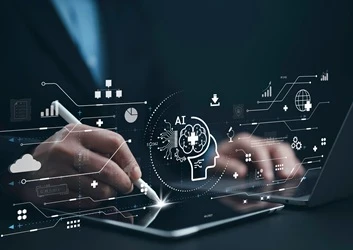What is Edge Computing?
A look at why the future of data management is living life on the edge.
Add bookmark
"Edge Computing" is a term used to describe the deployment of computing resources and applications near users or at the edge of networks. This means that the computing resources and applications are located close to users where they can be accessed quickly and easily.
Why is Edge Computing important?
There are a number of reasons why edge computing is important. First, it allows companies to save on infrastructure costs. By deploying computing resources and applications near users, companies can reduce the amount of infrastructure they need to maintain. This saves money in the long run.
Second, edge computing can improve user experience. By having the computing resources and applications located close to users, companies can reduce wait times and improve the overall user experience. This improves the user experience and can lead to better engagement.
Third, edge computing can help improve productivity. By allowing users to access to computing resources and applications quickly, companies can improve their productivity. This can lead to increased efficiency and better overall business outcomes.
How is Edge Computing different from Cloud Computing?
Cloud Computing is a term used to describe the delivery of computing resources and applications over the internet, which means means that the computing resources and applications are hosted by a third party. Edge Computing is different in that the computing resources and applications are located near users, allowing for faster access and faster responses.
Edge computing also uses edge analytics in order to function, which essentially is an approach to data collection and analysis in which an automated analytical computation is performed on data at a sensor, network switch, or another device instead of waiting for the data to be sent back to a centralized data store. Edge analytics can be used to identify patterns and trends in data that would otherwise be difficult or impossible to detect, leading to improved decision-making and increased efficienc and improving the overall quality of data and reduce latency issues. Edge analytics can also help to identify user trends and behavior making it easier for companies to provide targeted and personalized customer experiences.
What are some examples of edge computing use cases?
There are a number of examples of edge computing use cases. One example is the use of mobile devices to access computing resources and applications. Another common example is the use of devices to gain access to healthcare information and services, such as wearable devices like the Apple Watch which provides users with access to information and tools that can be used to improve their health and quality of life.
Elsewhere, Starbucks uses edge computing to manage its in-store Wi-Fi service whilst companies like Amazon use edge computing to analyze data from smart security systems and voice-activated personal devices like the Amazon Echo to improve customer service and provide customers with a more convenient shopping experience.
In terms of mobility, companies such as Volkswagen are using edge computing to develop self-driving cars by processing and analyzing the huge amounts of data that are generated by connected cars in real-time using a cloud platform located at the edge. Ford is also using edge computing to improve the driving experience through the use of technology like machine learning to analyze driver behavior and road conditions in order to improve safety as well as enhance its onboard infotainment system.
What tools are available for allowing enterprises to use edge computing?
There are a number of tools that are available for allowing enterprises to use edge computing. One of the most popular tools available is IBM's Watson. Watson can be used for a variety of tasks including processing and analyzing large volumes of data to identify and categorize it according to specific categories. It can also be used to perform complex tasks such as generating reports and carrying out natural language analysis. In terms of edge computing, Watson allows businesses to rapidly access and analyze data closer to the source so that it can provide a more accurate picture of that data while also reducing the need for businesses to transfer large amounts of data to a data center for analysis and processing.
There are also a number of alternative options available including Google Cloud Functions and Microsoft's Azure Functions which provide developers with the functionality needed to build and deploy apps that can be easily integrated with existing IT infrastructure. Microsoft's Azure Edge for example allows users to integrate it into their existing IT infrastructure by allowing them to use the Azure cloud platform to run their apps on the edge. This helps them to easily manage data and scale their services without having to depend on data centers which can be expensive to operate and maintain.
What are the challenges of edge computing?
There are a number of challenges associated with edge computing. One challenge is the need for secure and reliable connections. This is because the computing resources and applications are located close to users. If the connection is not reliable, then users will not be able to access the resources and applications.
Another challenge is the need for devices that are capable of accessing edge computing resources and applications. Most modern smartphones are capable of connecting to edge computing services and resources, yet there are still many devices out there in the world which are not yet compatible with this technology.
Overall, however, there are a number of benefits associated with edge computing and many businesses are already taking advantage of it in order to improve their operations and enhance the performance of their applications and services. By understanding the challenges and taking advantage of the available options, businesses can develop strategies that will allow them to fully take the advantages of edge computing today.



























